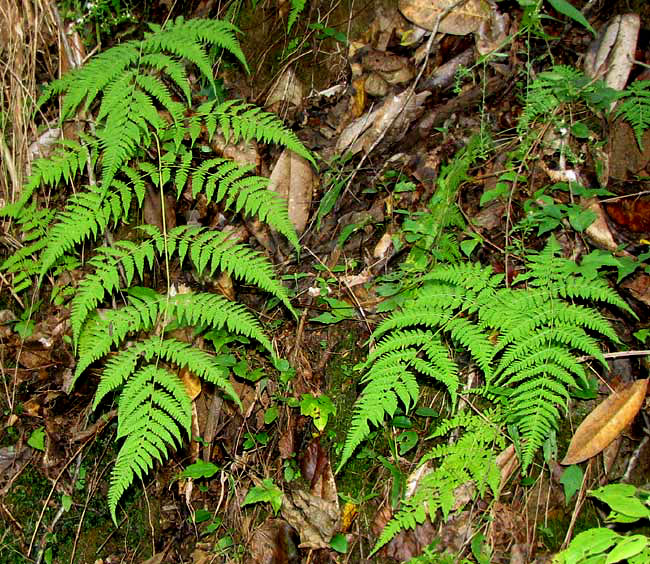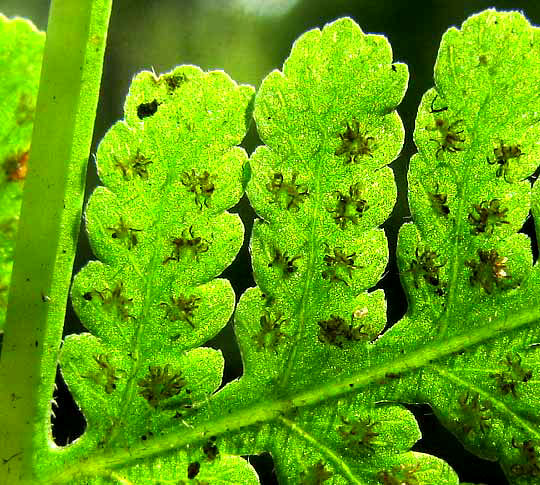Excerpts from Jim Conrad's
Naturalist Newsletter

from the October 18, 2009 Newsletter, from near Natchez, Mississippi
TORRES'S FERN IN THE BAYOU
Around here, very different from Louisiana, bayous are deep, often vertical-walled gullies cut into the ice-age dust (loess) thickly mantling the area. These bayous often are relatively sheltered from wind and sunlight, thus providing good habitats for moisture-loving mosses and ferns, such as the fern shown above.
One reason that fern caught my eye was that the larger frond was so big -- about three feet long. Another was that the larger frond in the picture is "twice- pinnate"; it was divided into segments, which were divided into segments, and then those final segments were further deeply cut. Notice that the smaller fronds in the picture, of the same species, are only once- pinnate. I read that some fronds become thrice-pinnate!
This is the Torres's Fern, sometimes called the Mariana Maiden Fern, MACROTHELYPTERIS TORRESIANA. It's an invasive species native to tropical and subtropical Asia and Africa, but now invading most tropical and semitropical American countries. In the US first it showed up in Florida and now has spread to eastern Texas along the Gulf Coast and a bit inland, and up the Atlantic coast to South Carolina. Its Flora of North America distribution-map can be seen here.
Its fruit dots, or spore-producing sori, are shown below:

We've seen that the sori of many fern species are partially covered with cellophane-like roofs of various shapes, called indusia. Torres's Fern indusia are C-shaped, thick in the middle like croissants, with sporangia emerging from beneath the indusia's outer sides. Sporangia consist of spore-containing capsules atop slender stems. When the spores are mature and the weather just right the bags snap open and spores are released. In the picture I think the dark, hairlike things radiating from the indusia are sporangium stems after the capsules have released their spores.
Torres's Ferns are occasionally found in this area, though I've never seen them except on shaded, moist, steep to vertical loess walls down in the bayous.